How to Use a Boat Compass (Complete beginners guide)
Every boat should have a compass and a sailor that knows how to use it. It isn't difficult to use one - it's just so easy to make mistakes if you've never learned to use them. In this post I learn you how.
How to use a boat compass? The lubber line (a small line on the compass) marks your direction on the compass card. The direction is given in degrees. You pick a course on a marine chart. Then, you steer the boat so that the lubber line points to the correct degree on the compass card. You keep course by making sure the lubber line stays put.
Using a compass is easy enough. The hard part is making sure it's properly calibrated, and this is where many people go wrong.
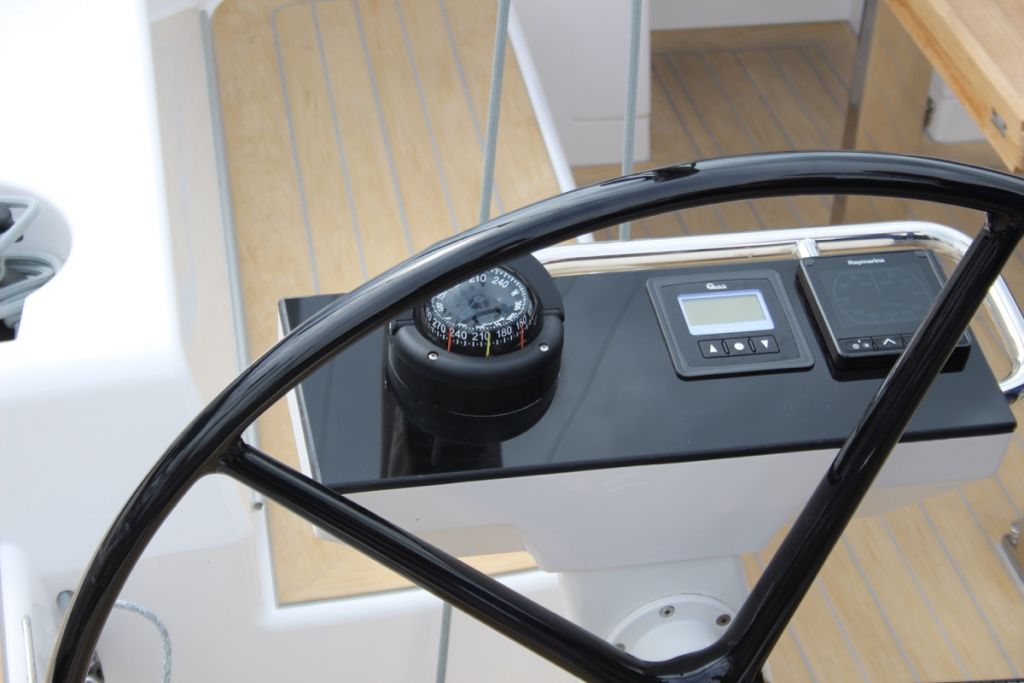
On this page:
How To Use a Boat Compass
To use a boat compass, you need the following:
- a compass (of course)
- a maritime chart
- make sure the compass is properly calibrated and adjusted
Each compass has a line on its glass. This is called the lubber line. The lubber line is used to mark your direction on the compass card. The compass card is the rotating card that says North, South, and so on.
You pick a course using a marine chart. You start by determining your starting position (the easiest is taking your marina - typically it will be on the map). Then, pick your destination. You can determine the course by drawing a line between these two points and reading the angle (degrees).
Learn to Plot a Course Step By Step
To learn how to plot a course on a chart step-by-step, read our full illustrated guide here.
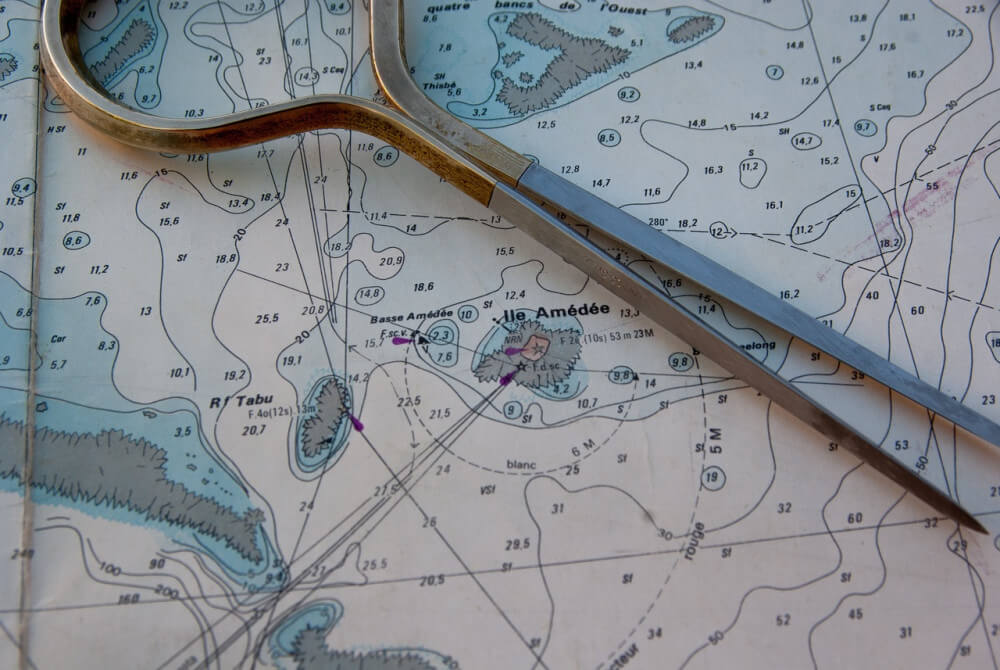
Time to get moving. You set course by steering the boat to the direction where the lubber line on the compass matches the degree you chose exactly. You keep course by making sure your lubber line stays put.
Generally, you can simply use the above method, but it can prove inaccurate with longer journeys due to drift and tidal currents. Calculating and planning your course to steer (CTS) is a different subject and outside the scope of this article.
Why it's important to have one
A well-compensated compass gets you home, period. It's the most important and reliable navigational instrument around. The only place it's useless is near the magnetic poles, but who goes there for their sailing trip ( - dare)? It doesn't require any power, it doesn't rely on electronics or satellite. And sadly, it's as underutilized as it is useful.
If you carry a compass and a paper chart, you're practically unbeatable.
I would much prefer a compass over any electrical system. Chartplotters are great, but they won't beat a compass in the reliability game. I feel much more secure navigating any waters using a compass than all the chartplotters in the world.
If your boat doesn't have a compass, get one asap. I really mean this. There will come a day you really wish you had one. There fairly inexpensive, so in my opinion it's better to skip the new sonar-fishfinder-thing and get a reliable compass. They last you a lifetime and will serve you well.
You don't have to go overboard when buying a good, reliable compass. It's pretty affordable. If you want to know what I use, read my article here. It's so good, I even have one in my car.
Calibration / alignment
If the compass isn't properly calibrated it can cause trouble. I'll get into the reasons for misalignment below. The easiest way to check for misalignment is by paying attention when you enter or leave your marina. Most marine charts show the exact course for entering harbors and marinas. Align yourself with the buoys and check whether your compass matches.
How to make sure you always get home safely
When setting sail, always remember the opposite direction of your course. This is the reciprocal course. It's the magic number that will get you home, no matter what.
More high-end compasses will have a lubber line at the back as well. This helps you to read the direction reciprocal course. If you don't have a fancy double lubber line, simply add 180 degrees to your course. I make sure to remember it every time I set course. If my chartplotter fails, I'll get home without problems.
I recommend having a backup compass in your captain's bag as well.
Types of Compasses
There are many types of compasses, but the main ones you use on a boat are magnetic and GPS.
- magnetic compass - use a moving card or moving needle to determine Magnetic North
- GPS compass - these use multiple satellites that pinpoint location; they determine True North
- fluxgate compass - no moving parts; uses coils of wire and uses electricity to amplify the directional signal
In addition I recommend to have a hand bearing compass. This is a good backup and can be especially useful for coastal navigation.
How Does a Compass Work?
The most common type of compass is magnetic. It points to magnetic north. It does this by small magnets which are attached to the compass card. The compass card has a degree-scale which sits on a small bearing. This allows the card to rotate freely as you change direction - it's kept in liquid air to allow free movement. You can read your direction using the needle or lubber line. The best type of compass for boats is a magnetic compass with a curved card and lubber line.
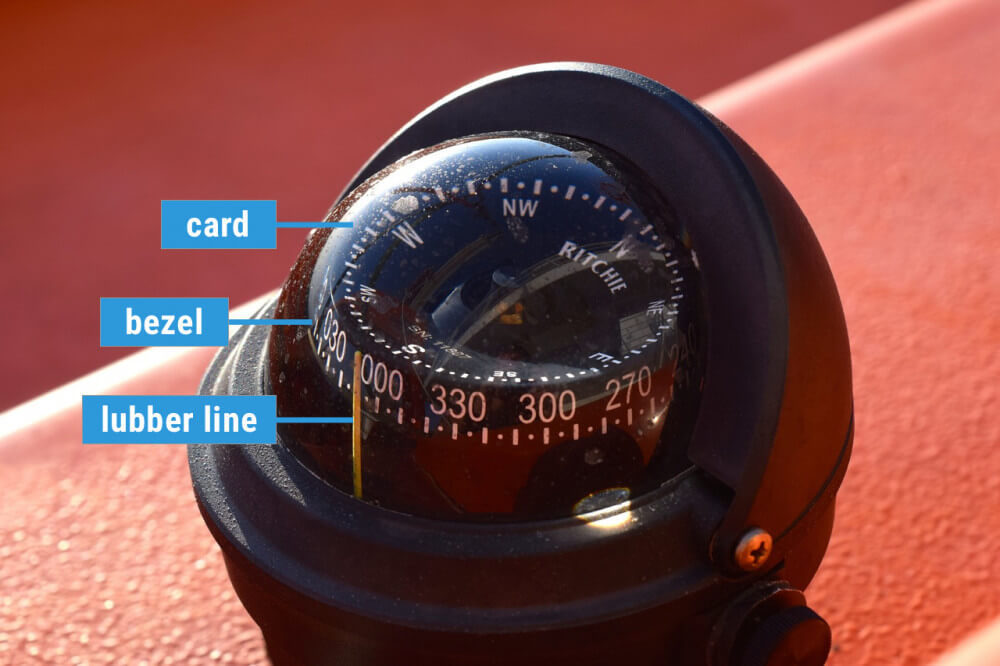
So, simple enough, right? Not really. When we say a compass points north, it gets more complicated than you might imagine. There are three different norths: (1) Magnetic North, (2) True North, and (3) Grid North.
Grid North is north as indicated by the central vertical grid line on a map (the line running east of the UK). True North is the end of Earth's axis. The difference between true and grid north is very small and can be ignored for navigational purposes.
Magnetic North is where all magnetic compasses point to. The magnetic north pole shifts over time (less than 6 meters per year on the surface), called the 'Chandler wobble', under influence of the dynamo currents of the Earth's core. If you want to learn more on how this works, you can find more information on Scientific America here.

Checking the alignment when leaving the marina
A compass can be misaligned. Luckily, there's a simple way to find out. You can find the directional line for the entry of all major marinas on a marine map. It always tells you the exact direction. This gives you a great opportunity to check the alignment of your compass every time you leave and enter your marina.
Once you're aligned with the buoys, you can compare the direction your lubber line indicates to the direction you know you're sailing. Adjust accordingly.
Other ways to check your compasses alignment are:
- compare to reliable, accurate compass
- compare to GPS (though this can be trouble)
- find a large object that aligns to north and set course to that object
Difference between GPS and Compass
Why can't we just use GPS?
However unlikely, in theory GPS can fail in many ways. On the satellite side of the operation, the most common reason for failure in open waters are atmospheric conditions (aka the weather). More uncommon causes for failure are solar storms, radio interference, temporary gaps in coverage due to maneuvers and satellite maintenance (yes, the government does need to attend to these bad boys).
In my opinion, a major reliability issue is the energy dependency of GPS devices: if you run out of power, you have no means of navigating.
A compass tells you direction, not just track
The compass is the only instrument that tells you which direction your vessel is pointing. Sure enough, GPS will tell you in what direction you're headed, but only when you're in motion. It by no means tells you what direction you're pointing in right now. And this is important because the current or wind will influence your course over ground, which will differ from your steering direction.
In short, if you're serious about navigation, and want to plan, for example, your course to steer, you need to know how to use a compass.
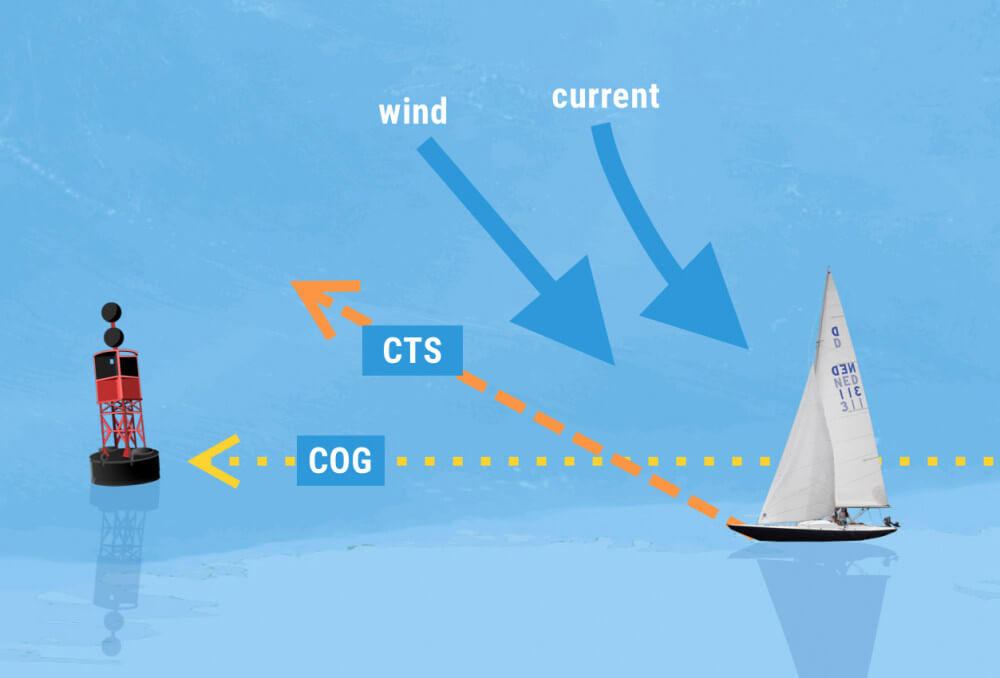
Using it with your navigation system
Navigating on a compass is way easier than sailing on your chartplotter. You just pick a course and stick to it. That's why I prefer to sail on compass. Whenever I get in proximity of my destination I switch to my navigation system. This ensures a way more relaxed trip. I also like to not become overly dependent of my GPS.
Nowadays, you can get a reliable, easy-to-use chartplotter, made by a reputable brand, with all the functionalities of an advanced marine GPS, at a fraction of the price. Click here to read my recommendation.
Detecting and correcting Cross Current
A cool trick when using the compass and GPS combined is detecting a cross current. You do this by comparing your true compass course to the course over ground (COG - GPS). You can find out the speed and direction of the current, and adjust your course to steer accordingly.
A 6° course correction in the direction from which the current flows is required per 10% of cross-current velocity relative to the ship's velocity.
If you're sailing at 10 knots, you correct 6° for every 1 knot of cross current.
| Cross-Current Rate (knots) | Correction to Main Course (°) | 6° Rule of Thumb |
|---|---|---|
| 1 | 5.7° | 6° |
| 2 | 11.5° | 12° |
| 3 | 17.5° | 18° |
| 4 | 23.6° | 24° |
| 5 | 30° | 30° |
| 6 | 36.5° | 36° |
Taken from the Lo-Tech Navigator by Tony Crowley
How to Swing a Compass
Calibrating a compass - also called swinging - literally means you adjust the compass' deviation using tiny magnets. Compass adjusting is a complex process that requires a lot of skill and experience. That's why there are professional compass swingers. I advise you get one of them to do the swinging, since you don't want to mess up your compass. But we can still have a look at how it's done.
Compass deviation is caused by materials and equipment used in and on the vessel. For example, a compass that's slightly left of the boat's centerline may have a slight deviation to the right. The hull mass can affect the compass. If it's mounted near electronic equipment, that will affect the deviation quite a bit, since electronics produce a magnetic field.
Compass deviation is the difference between Magnetic North and the direction in which you're pointing. The deviation is measured in degrees east (+) or west (-).
A compass swinger always starts out by creating a compass deviation card. He or she does this by taking the boat out for a spin, and comparing each directional line to a very reliable compass. Then, he writes down each deviation. You can create your own deviation card, and this is even recommended. A deviation card remembers you to correct the course for your particular compass.
You can download a printable compass deviation card here - 100% free.
If you're not planning on swinging the compass, at least fill in the deviation card, laminate it, and hang it besides your steering wheel.
The next step in swinging is the most difficult. The swinger will use very small magnets and place them around the compass in a way that the deviation is reduced to a minimum. You can do this yourself, but it requires a lot of patience. I like to outsource these kinds of frustrating jobs.
You can let somebody swing your compass for roughly $400.
However, if you want to do this yourself, please consider the following tips:
- Make sure the water is smooth - no strong drift
- You could try to do it in a narrow river with a strong current - if you want to go mad
- You need a buoy that has fixed bearings to at least 3 landmarks
- You need a 'master rose' - a quality compass
- You need a friend in a dinghy
- Tie up your boat at the buoy and tie the dinghy to the stern
- Use the dinghy's engine to point to each of the landmarks and compare the master compass reading with yours
- Notate the deviation for each 30 - 45 degree increment.
- Recheck after compensation
I hope to do a full article on how to swing a compass in the future.
Quick Mounting Tips
Since a compass is magnetic, any metals in the vicinity will interfere with it. This is called magnetic deviation. Picking a good spot for mounting is crucial to ensure accuracy. A couple of quick tips to keep in mind when mounting yours:
- keep it away from metals (they will swing the compass) ...
- ... but also from electrical systems (they have a magnetic field as well)
- mount as close to the centre line of your boat as possible (this ensures the magnetic deviations are mostly symmetrical)
- make sure it's accessible for adjustment
- it should be easily readable from the helm, while at the same time allowing you to keep an eye out for meeting vessels
- use bronze or stainless steel screws, washers, and brackets for mounting - don't use magnetic materials
There are three mounting styles for boats: bracket mounted (these are easy to install anywhere yourself), flush mounted (these are recessed into your dashboard or instrument panel), and overhead mounted (these hang from the ceiling at eye level).
Bracket mounted compasses are easiest to install. Flush-mounted compasses take a bit more effort, but look really good. A con is that they may be less accessible when you need to adjust them. Overhead mounted compasses have the advantage that they're easy to read because they're at eye level, and any air bubbles won't be as much of a problem. They are also away from most electrical equipment, which reduces magnetic interference. However, they can obviously only be mounted on larger boats with a steering hut.
Related Questions
Does a boat need a compass? Every boat needs a magnetic compass. It is still the most reliable means of navigation. It is also the most convenient for long-distance navigation. GPS and chartplotting navigation are becoming the norm for premium yachts, but these systems can fail. A compass is a great backup to have in case of technical failure.
What does it cost to swing a compass? It costs anywhere between $400 - 600 to swing a compass. This includes creating or checking the deviation card, placing the magnets to reduce the deviation, and doing a final check to make sure the compass is calibrated properly.
What is a compass deviation swing? A compass deviation swing a method to calibrate a compass, using small magnets to offset the deviation of the compass. Compass deviation is the difference between Magnetic North and the direction the compass is pointing in. Deviation is caused by electromagnetic fields around the compass.
Did you find the answer to your specific question?
👍 13 👎 6
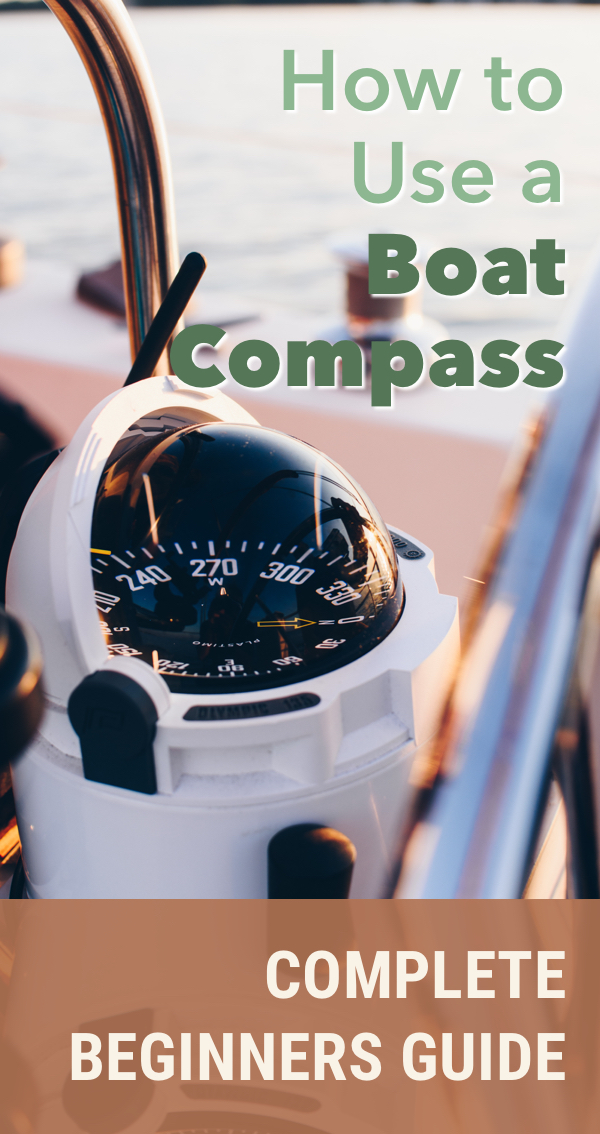
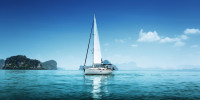
Comments
Young Kanf
Got to find ur site, really helpful with details from experience.
Trying to get a sailing boat to across pacific, am in south korea, and realized very hard job to locate my boat.
Maybe new bot since I and my wife hate dirty ot damaged boat after all and also requires on site checkups to find right one. So maybe new boat, like 2017-18build never owned or used. How’s that??
Ant comments/help will be highly appreciated.
Shawn Buckles
Hi Young Kanf,
If you have the budget to buy a brand new boat, that’s great. But there are actually very good second-hand sailboats available.
It’s really up to you and a matter of personal preference.
I’m very happy that you find the website helpful. Sailing the Great Pacific is said to be one of the most fulfilling and life-changing sailing trips there are, so all the best to you!
Best,
Shawn
Greg
Hey Sean.
Interesting articles! Plan to retire on a boat. Got anything on chart plotting?
Greg.
Dmytry
Why not use an online compass like this: https://freecompass.online/
Such compasses do not require an Internet connection, and in any case you will have a power bank with you)
Abdul Wahab
you need to try the best online compass tool https://onlinecompass.live/ . It is fast, secure, relible and easy to use. It has critical advantage over other compasses because it once use your exact location and then gives you accurate readings. You can also use it offline once you save it.
Leave a comment